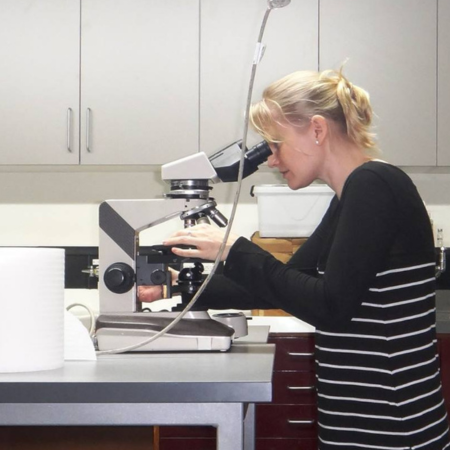Making New Zealand a world leader in volcanic research - Meet Elaine Smid, Programme Manager at DEVORA
The city of Auckland is home to the Auckland Volcanic Field, which could erupt at any time. As the country’s transport and economic hub, and home to 1.6 million people, an eruption would have enormous impacts not just on the city itself but on all of Aotearoa New Zealand.
To help prepare Auckland for future eruptions, we need to understand how and why volcanoes erupt and the potential impacts. This work is being done by DEVORA (DEtermining VOlcanic Risk in Auckland), a collaborative research programme led by volcanologists from the University of Auckland and funded by Toka Tū Ake EQC and Auckland City Council.
The programme is one of the longest standing investments made by Toka Tū Ake into reducing the impacts of natural hazards on people and property. Last year, the organisation invested $19 million into natural hazards research, science and public education programmes like DEVORA.
One of the people integral to DEVORA’s success is Elaine Smid. Elaine manages the DEVORA research programme and actively researches the Auckland Volcanic Field as part of her PhD from the University of Auckland.
Originally from rural Virginia, USA, she didn’t grow up around volcanoes, but she always had an appreciation for science and the natural world. “I remember admiring the sparkly rocks in my gravel driveway as I waited for the school bus every morning,” she says.
After a bachelor’s degree in environmental sciences and chemistry at the University of Virginia, she received a full scholarship to the University of Hawai’i at Mānoa to study a master’s in geology and geophysics. Finally surrounded by volcanoes, her interest in them grew on field trips.
“Whenever I finished my fieldwork early, I rewarded myself by visiting the active lava flow fields.”
Now in her final year of her PhD, Elaine studies deposits from the Auckland Volcanic Field (AVF) to learn more about what kinds of rocks are melting deep in the mantle under the city, how much warning we may get before future eruptions and how much hazardous volcanic gas can be released.

After graduating, she plans to continue managing DEVORA alongside expanding her research into the AVF.
“A position at GNS Science or a US Geological Survey volcano observatory is my ultimate goal. Later in my career, I can see myself getting more involved in the people or policy-side of things - social science research or acting as a natural hazards policy advisor.”
Elaine was one of the first people to join DEVORA when it launched in 2008. Since then, she’s seen it grow in impact and value.
Now, the programme covers research into everything from geological aspects of the AVF to hazards, geo-heritage, legal frameworks and volcanic risk, while also leading public education programmes to ensure its research is understood and useful to a wide audience.
With the frequency and intensity of natural hazards events growing, Elaine says that creative and inclusive research approaches like DEVORA are more important than ever.
“We must invest time and funding now, and on an on-going basis, to make everyone safer in the long-term. I’ve seen first-hand how rapidly our knowledge, understanding, and tools and strategies to manage a volcanic eruption in a populated area can advance with a relatively low but consistent investment from involved partners such as Toka Tū Ake EQC and Auckland Council.”
Beyond our shores, Elaine says that her colleagues overseas have also recognised DEVORA’s value and have been inspired to create similar programmes in their own countries.
“Programmes like DEVORA should be a point of pride for New Zealanders, as they place us as a leader on the world stage in this space,” she adds.